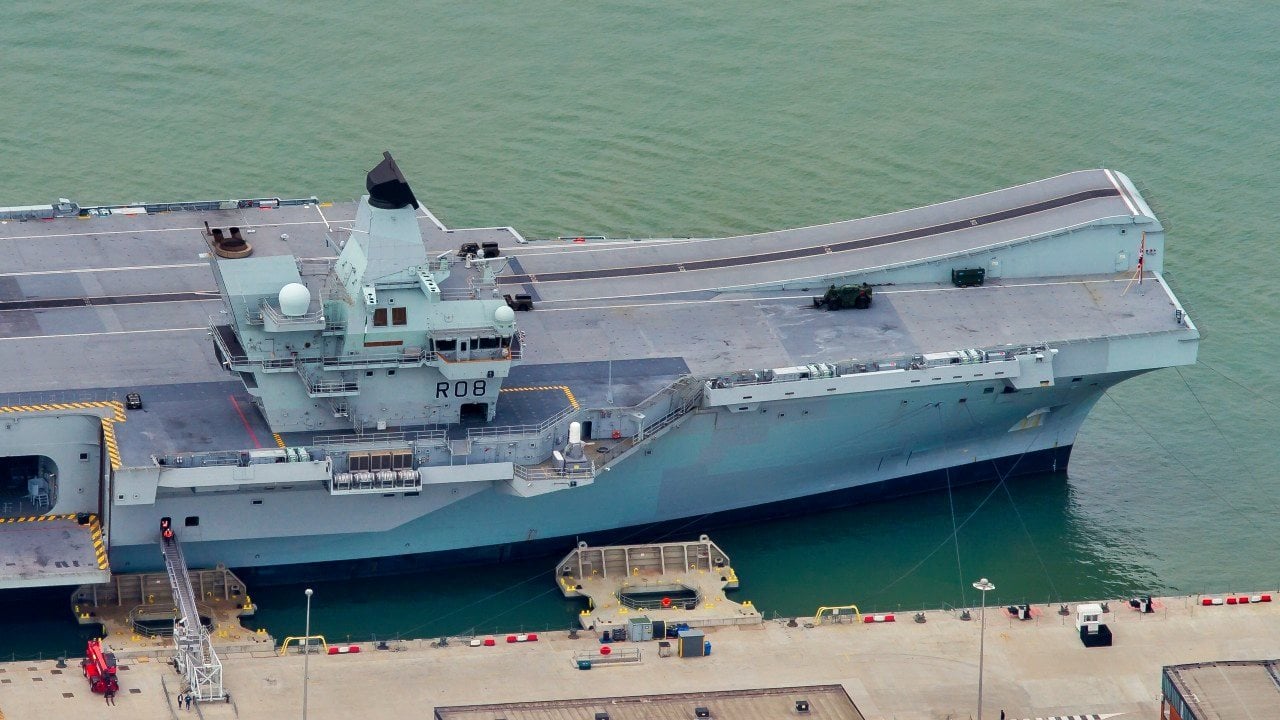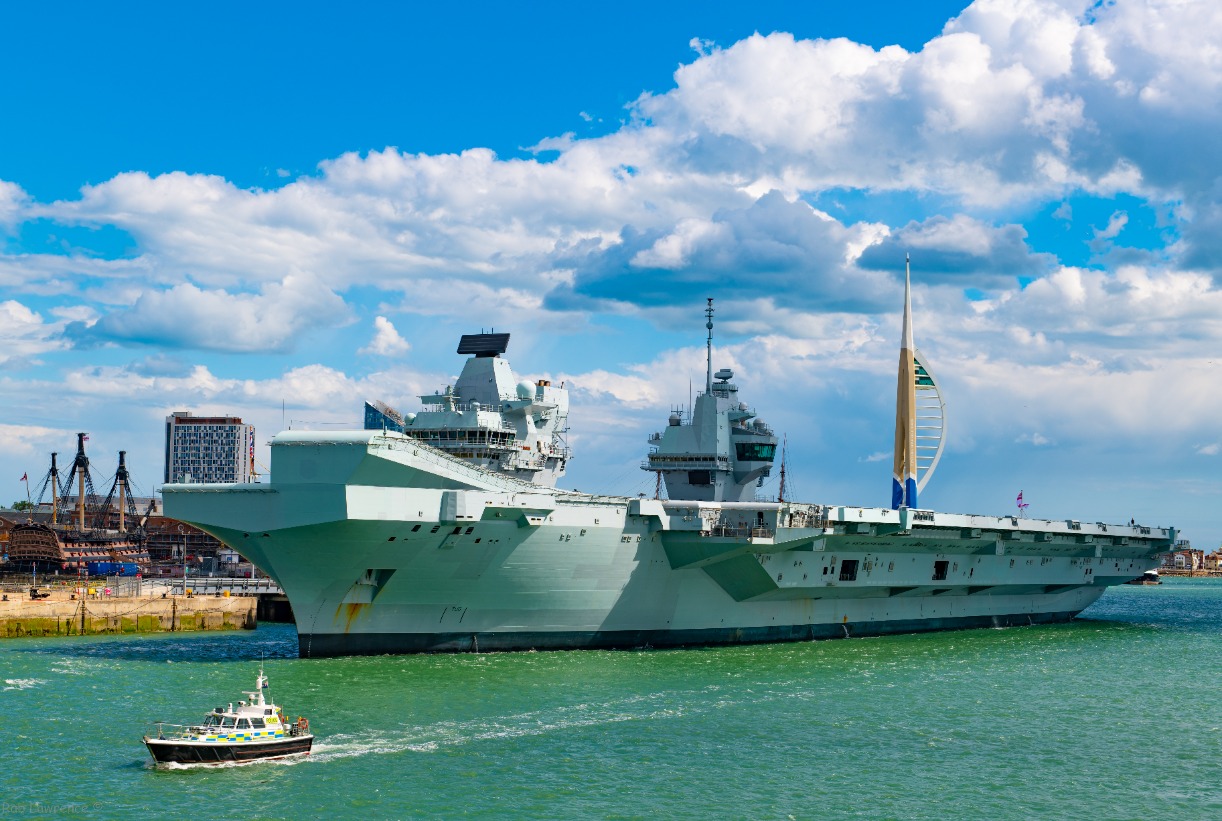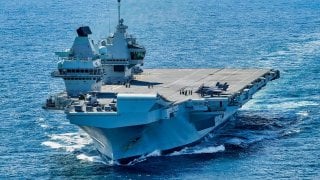The Royal Navy's Aircraft Carrier Disaster Might Finally Be Over
HMS Queen Elizabeth, the Royal Navy's flagship aircraft carrier, returned to Portsmouth after a four-month hiatus for mechanical repairs. Initially set to lead NATO’s Exercise Steadfast Defender, the £3.2 billion carrier encountered a mechanical fault in February.
Summary and Key Points: HMS Queen Elizabeth, the Royal Navy's flagship aircraft carrier, returned to Portsmouth after a four-month hiatus for mechanical repairs. Initially set to lead NATO’s Exercise Steadfast Defender, the £3.2 billion carrier encountered a mechanical fault in February.

-Repairs at Rosyth Dockyard included sea trials to ensure readiness for upcoming deployments.
-The 65,000-tonne warship, capable of deploying 36 F-35B Lightning II fighters, sailed under the Forth Bridge and exchanged salutes at the Isle of Wight’s Cowes Week regatta.
-Despite her time in dock, the crew engaged in extensive training exercises. HMS Queen Elizabeth is now preparing for operations later this year.
HMS Queen Elizabeth: UK’s Flagship Aircraft Carrier Returns Home
The Royal Navy flagship aircraft carrier HMS Queen Elizabeth finally returned home after being sidelined for four months.
The £3.2 billion ($4.17 billion) carrier had been preparing to serve as the flagship for Exercise Steadfast Defender, NATO's largest naval operation since the Cold War when a mechanical fault was discovered during pre-sailing checks in February. The carrier, forced to head to the Rosyth Dockyard in Scotland in March for repairs to her shaft lines, spent last week undergoing sea trials in advance of her next deployment.
"HMS Queen Elizabeth has completed her defect repair work and capability upgrades at Rosyth and will now undergo a period of sea trials to prepare for future tasking," a Royal Navy spokesperson said earlier this month.
The 65,000-tonne warship arrived in Portsmouth on Tuesday evening, where she will next prepare for operations later this year.
"Whilst no warship wants to find itself spending unscheduled time out of the water, I am enormously proud of the work that has gone on in Rosyth," said Captain Will King, commanding officer of HMS Queen Elizabeth. "Everybody on board is looking forward to getting back to sea, where we belong, and picking up a busy programme in the autumn."
Special Moments for the Flagship
It has already been a picturesque trip for the aircraft carrier – one of two currently in service with the Royal Navy. After departing Rosyth in Fife, Scotland on July 22, HMS Queen Elizabeth sailed under the iconic Forth Bridge towards the North Sea.
On Tuesday, the warship sailed past the Isle of Wight, where she exchanged gun salutes with the Royal Yacht Squadron as part of the iconic Cowes Week regatta, the BBC reported. The River-class offshore patrol vessel HMS Tyne was reported to be serving as the "guardship" for the regatta. Though the racing events were postponed due to a lack of wind, numerous dignitaries were in attendance for the gun salute, while large crowds gathered to see the carrier sail past on her way to Portsmouth.
Even as the ship had been sidelined in Scotland, the flagship carrier still hosted visits from the heads of the Swedish and Chilean Navies, while her crew was able to take part in various drills and training exercises. That included a team from the Fleet Operational Standards and Training (FOST) organization, which provided a week of firefighting and damage control instruction.
Capable Warship?
HMS Queen Elizabeth formerly entered service in 2020, becoming the first carrier operated by the UK's Royal Navy since the HMS Ark Royal was decommissioned in 2011. The 932-foot-long warship is far more automated and advanced; and is capable of deploying 36 of the F-35B Lighting II fifth-generation stealth fighters. The carrier is able to launch twenty-four of the aircraft in just five minutes and has a maximum recovery rate of twenty-four aircraft in as many minutes.
In addition to carrying what has been described as the most dominant fifth-generation jet fighter in service today, the carrier's air wing is also composed of nine anti-submarine Merlin HM2 medium-lift naval helicopters along with four or five Merlin choppers for airborne early warning missions. For land operations, the carrier can also carry a mix of other helicopters including the CH-47 Chinook, AH-64 Apache, Merlin HC4, and Wildcat HM2.

However, apart from deploying F-35s against ISIS during her 2021 globetrotting voyage to the Indo-Pacific and back, HMS Queen Elizabeth had not taken part in combat operations.
There was speculation either the Royal Navy flagship or her sister carrier, HMS Prince of Wales, would be sent to aid the United States Navy's mission in the Red Sea to protect commercial shipping from the Iran-backed Houthi militants in Yemen, but the plans never materialized. It is unclear now if HMS Queen Elizabeth could finally be sent to the region later this year.
Author Experience and Expertise: Peter Suciu
Peter Suciu is a Michigan-based writer. He has contributed to more than four dozen magazines, newspapers, and websites with over 3,200 published pieces over a twenty-year career in journalism. He regularly writes about military hardware, firearms history, cybersecurity, politics, and international affairs. Peter is also a Contributing Writer for Forbes and Clearance Jobs. You can follow him on Twitter: @PeterSuciu. You can email the author: [email protected].
Image Credit: Creative Commons and/or Shutterstock.


